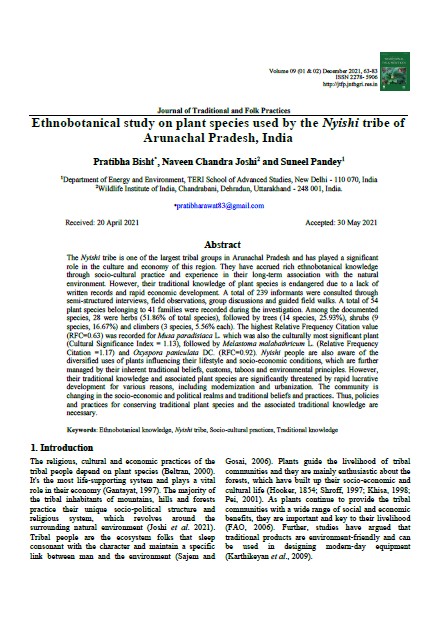Ethnobotanical study on plant species used by the Nyishi tribe of Arunachal Pradesh, India
Keywords:
Ethnobotanical knowledge, Nyishi tribe, Socio-cultural practices, Traditional knowledgeAbstract
The Nyishi tribe is one of the largest tribal groups in Arunachal Pradesh and has played a significant role in the culture and economy of this region. They have accrued rich ethnobotanical knowledge through socio-cultural practice and experience in their long-term association with the natural environment. However, their traditional knowledge of plant species is endangered due to a lack of written records and rapid economic development. A total of 239 informants were consulted through semi-structured interviews, field observations, group discussions and guided field walks. A total of 54 plant species belonging to 41 families were recorded during the investigation. Among the documented species, 28 were herbs (51.86% of total species), followed by trees (14 species, 25.93%), shrubs (9 species, 16.67%) and climbers (3 species, 5.56% each). The highest Relative Frequency Citation value (RFC=0.63) was recorded for Musa paradisiaca L. which was also the culturally most significant plant (Cultural Significance Index = 1.13), followed by Melastoma malabathricum L. (Relative Frequency Citation =1.17) and Oxyspora paniculata DC. (RFC=0.92). Nyishi people are also aware of the diversified uses of plants influencing their lifestyle and socio-economic conditions, which are further managed by their inherent traditional beliefs, customs, taboos and environmental principles. However, their traditional knowledge and associated plant species are significantly threatened by rapid lucrative development for various reasons, including modernization and urbanization. The community is changing in the socio-economic and political realms and traditional beliefs and practices. Thus, policies and practices for conserving traditional plant species and the associated traditional knowledge are necessary.


